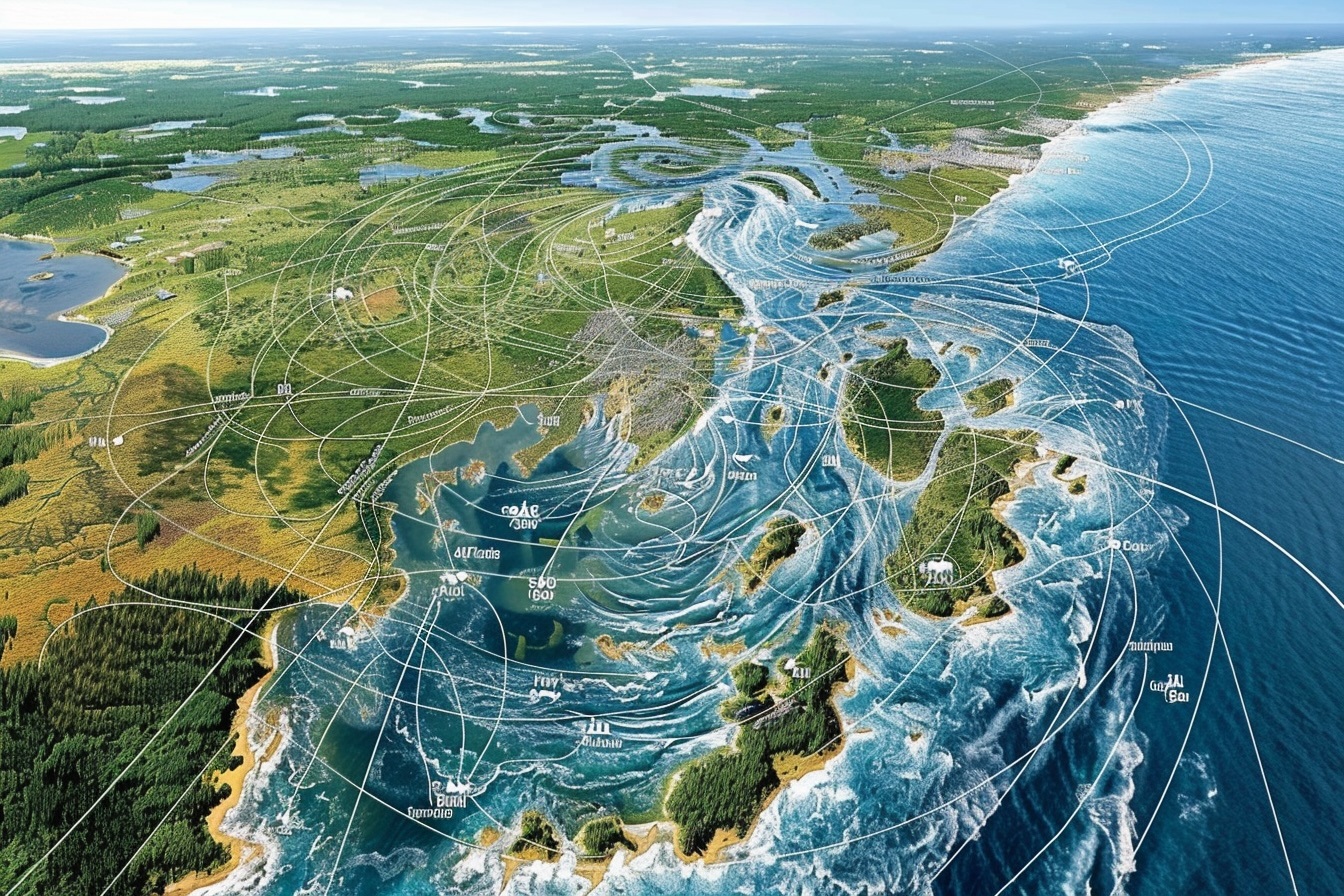"The integration of diverse scientific approaches is critical in revealing the intricate feedback mechanisms that define these coastal systems."
Posted: January 6, 2026

In the study of the Critical Zone, the areas where Earth's life-sustaining surface meets the atmosphere, humans are not mere observers but key drivers of environmental change. Understanding how human activities interact with natural processes is fundamental in Critical Zone science, especially in the context of coastal regions affected by sea level rise.
The 5-year National Science Foundation-supported Critical Zone Collaborative Network project, now in its fourth year, recognizes the importance of this interaction with the inclusion of a Coastal Cluster among the nine clusters in the Network. Members of the Coastal Cluster investigate the marsh-upland transition zones in the mid-Atlantic region of the US.
Team researchers employ a trio of investigative approaches: field observations, laboratory experiments, and sophisticated modeling techniques. Through these methods, scientists trace the intricate web of hydrological (water movement and storage), ecological (interactions between organisms and their environment), geomorphological (landscape changes), and biogeochemical (chemical cycles that affect the Earth's surface) processes.
These processes are deeply interconnected, influencing and being influenced by one another, creating a dynamic system where changes in one can ripple through all. Modeling in this context often involves computational simulations that help predict how these complex systems might evolve under various scenarios, providing valuable foresight for mitigation strategies.
During the 2024 European Geophysical Union’s General Assembly members of the Coastal Cluster will present findings describing how rapid marsh encroachment into areas formerly occupied by forests and farms—resulting in ghost forests and abandoned farms—is both a sign of natural change and a consequence of human actions.
The EGU24 poster session “Hydrological, biogeochemical, and ecological linkages at the land-sea margin: Insights from a coastal critical zone network” aims to dissect how human-induced factors like land use change and water management strategies combine with natural drivers such as sea level rise to reshape these critical zones.
The Coastal Cluster’s comprehensive approach helps delineate the feedback loops that accelerate or mitigate the impacts of these changes, offering insights into both the immediate effects on local ecosystems and the broader implications for global environmental health.
This interdisciplinary endeavor not only advances our understanding of the dynamic interactions at the land-sea interface but also underscores the importance of human influence on these critical processes.
As the authors note, "The integration of diverse scientific approaches is critical in revealing the intricate feedback mechanisms that define these coastal systems." Such knowledge is essential for developing effective strategies to manage and protect these vulnerable zones from ongoing and future transformations.
“Hydrological, biogeochemical, and ecological linkages at the land-sea margin: Insights from a coastal critical zone network” is presented during the 2024 European Geophysical Union General Assembly as part of Advancing Critical Zone Science Across Scales through Synthesis and Collaboration co-chaired by Critical Zone Collaborative Network Dust^2 Cluster Principal Investigator Jeff Munroe.
Authors: Holly Michael, Dannielle Pratt, Yu-Ping Chin, Sergio Fagherazzi, Keryn Gedan, Matthew Kirwan, Angelia Seyfferth, Lee Slater, Stephanie Stotts, and Katherine Tully.

 Coastal
Coastal